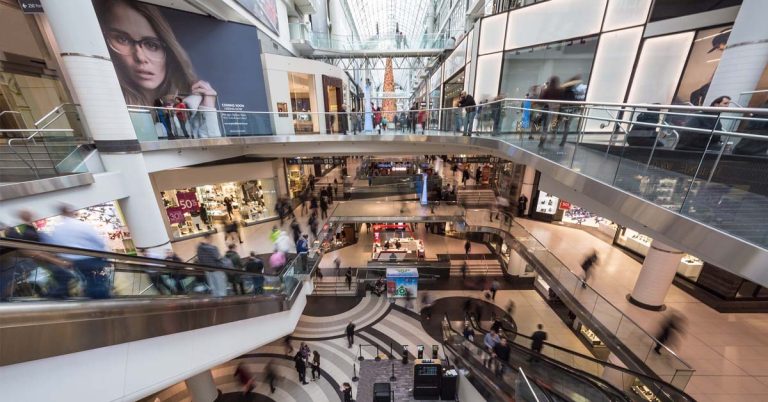
Did you know that 70% of purchase decisions happen right in the store? This means how products are arranged can make a huge difference in sales. That’s where planograms come in—a simple yet powerful tool that helps retailers place products in the best spots to boost sales.
In this blog, we’ll break down how planograms can turn your shelves into a sales machine, make the most of your space, and create a better shopping experience. You’ll learn why planograms matter, how they shape customer behavior, and the easiest ways to use them in your store. Whether you want to increase sales, make customers happier, or improve inventory management, this guide has you covered.
Table of Contents
What Is a Planogram in Retail?

A planogram in retail is a detailed diagram that tells about the product placement in a store. It is built around consumer behavior, sales data, and marketing strategies, ensuring that popular and high-margin items are prominently displayed. This strategic arrangement not only maximizes shelf space but also influences consumer purchasing decisions, making it an important part of retail planning.
Purposes of Creating a Planogram for Retail Stores
-
- Maximizing Shelf Space: A well-structured planogram ensures that every inch of shelf space is used effectively, allowing retailers to display more products without clutter.
- Enhancing Customer Experience: Planograms improve customer experience by logically organizing products, making it easier for them to navigate the store and increase overall shopping satisfaction.
- Facilitating Inventory Management: A clear planogram solution helps retailers manage stock levels, reducing the sad chances of random out-of-stock scenarios
- Maintaining Brand Consistency: A standardized planogram software makes sure that product displays are consistent across all locations, reinforcing brand identity.
How Do You Read a Retail Planogram?
Reading a retail planogram involves understanding its various components. Here are key elements to look for:
-
- Product Placement: Each item is assigned a specific location on the shelves, often with guidelines on the number of facings (a product’s visible units).
- Category Grouping: Products are organized by category, making it easier for customers to find similar items
- Visual Indicators: Colors, symbols, and notes can highlight promotions or seasonal displays, guiding staff on how to use the layout effectively.
Familiarizing yourself with these components can help ensure that the planogram is executed accurately and effectively.
What Are the Features of a Planogram in Retail?
A well-designed planogram in retail includes several key features that contribute to its effectiveness:
- Visual Layout: A clear visual representation of how products should be arranged on shelves, including specific placement for each item.
- Product Segmentation: This includes categorizing products by brand, type, or promotional status, which allows for more targeted marketing and easier customer navigation.
- Space Allocation: Guidelines for how much space each product should take up, making sure that popular items are easily accessible while remaining organized.
- Inventory Management: Recommendations for stock levels to help retailers maintain adequate supply without overstocking.
- Promotional Areas: Designated areas for seasonal promotions or featured items, which draw attention to key products.
These features make planograms invaluable for retailers aiming to enhance product visibility and drive sales.
Retail Planogram Key Elements
Key elements of a retail planogram include:
-
- Product Categories: Grouping products by type or brand to make navigation easier for customers.
- Shelf Space Allocation: Determining the ideal amount of space for each product based on sales performance and consumer trends.
- Promotional Displays: Designating specific areas for promotional or seasonal products to draw attention.
- Planogram Compliance: Making sure staff follow the planogram layout to keep product displays consistent and effective.
Merchandising Planograms
Merchandising planograms focus specifically on how products are presented in order to maximise their appeal. These planograms are created with the customer experience in mind, using visual techniques to draw customers in and encourage them to explore additional products. Better merchandising can lead to significant increases in sales and customer loyalty.
The Role of Planograms in Retail Visual Merchandising
Planograms help retailers match product placement with customer choices. With a smartly put layout, products look more appealing, which attracts shoppers and encourages quick buys, making the shopping experience more enjoyable.
Effective visual merchandising through planograms involves:
-
- Enhancing Aesthetic Appeal: Attractive displays can draw customers in and encourage them to explore the store.
- Guiding Customer Flow: Well-organized shelves and displays can direct customer movement, increasing the likelihood of purchases.
- Highlighting Promotions: Planograms enable retailers to effectively showcase promotions and new products, maximizing their visibility.
- Improving Brand Consistency: Adhering to planograms ensures that brand guidelines are consistently applied across multiple locations, reinforcing brand identity.
Planogram Software to Maximize Sales
Using planogram software can greatly enhance the efficiency of creating and managing planograms. Key features of planogram software include:
-
- User-Friendly Interfaces: Simple design tools that help retailers create planograms quickly and easily.
- Data Analytics: Insights into product performance that help retailers make informed decisions about product placements.
- Collaboration Features: Tools that enable team members to work together seamlessly, ensuring consistency in implementation across multiple retail locations.
What Is an Example of a Planogram?
An example of a planogram could be a layout for the beverage section in a grocery store. This planogram would show where different types of drinks, like sodas, juices, and bottled water, should be placed on shelves. It would also specify the number of facings for each product, as well as any promotional signage, to increase visibility and encourage purchases.
Conclusion
A planogram is a critical tool in retail for optimizing product placement and improving the customer shopping experience. A well-planned layout, whether done manually or using planogram software, is key for success in retail. Planograms help retailers design their stores to catch shoppers’ eyes and encourage purchases, boosting sales and building customer loyalty.











